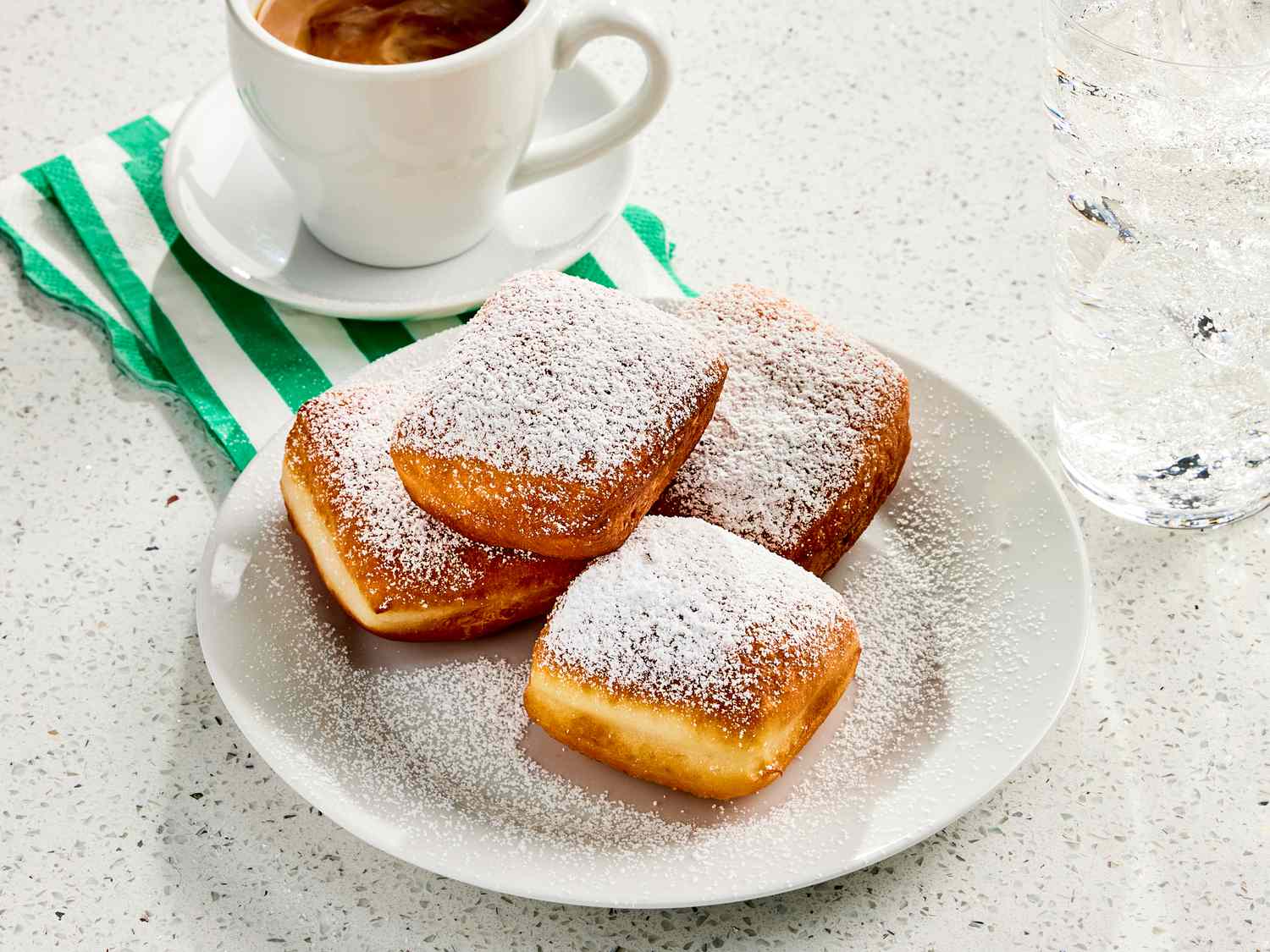The Secret Behind Perfect Beignets
Minimizing sugar while increasing salt content creates a delightful balance of flavors, making these beignets the ideal companion for a generous dusting of powdered sugar. A prolonged refrigeration proofing process results in a light and airy texture that is simply irresistible.
Whenever I travel to Louisiana, visiting iconic spots like Café du Monde in New Orleans or Coffee Call in Baton Rouge for hot, fresh beignets paired with café au lait is non-negotiable. While some family members prefer to take their beignets home, I believe there’s nothing quite like enjoying them straight from the fryer—soft, fluffy, and warm.
Thanks to this classic Louisiana-style beignet recipe developed by Nicole Hopper from Birmingham, Alabama, I can now indulge in freshly made beignets at home whenever the craving strikes (though deep-frying isn’t an everyday affair). This recipe yields light and airy treats with a subtly savory flavor enhanced by buttermilk and topped off with ample powdered sugar.
Crafting the Ideal Beignet Batter
Nicole’s approach was not to replicate Café du Monde’s famous mix but rather draw inspiration from its unique characteristics. “What struck me was how their mix is low on sweetness yet high on saltiness,” she explains. “I aimed for a similar profile—lower sugar content combined with more salt and buttermilk.” The result? A perfectly balanced treat where sweetness comes primarily from the powdered sugar dusted after frying.
While many recipes call for cake or pastry flour, we opt for bread flour instead. This choice provides just the right chewiness while maintaining tenderness—a hallmark of great beignets. They should feature an airy interior filled with medium-sized air bubbles rather than one large pocket surrounded by dense dough. Bread flour’s strength ensures that our beignets achieve that desired open texture without becoming too heavy like traditional doughnuts. Although you can substitute regular milk for buttermilk if needed, our tests showed that using buttermilk adds an appealing tanginess that enhances flavor.
Understanding Diastatic Malt Powder
Our recipe includes optional diastatic malt powder—a seemingly intimidating ingredient that’s actually quite simple. Nicole clarifies: “Diastatic malt contains enzymes found naturally in bread flour; it aids fermentation by breaking down complex starches into simpler sugars.” This process boosts fermentation rates and improves rise while enhancing browning during frying due to increased sugars available for caramelization reactions.
While it’s possible to make delicious beignets without diastatic malt powder, adding it—or even doubling it if your bread flour lacks enzymes—can significantly improve your results.
The Critical Role of Proofing
After preparing your slightly sweetened dough, allow it to rise at room temperature before refrigerating it overnight (or up to 18 hours). Once chilled and cut into squares for their final rise before frying, this multi-step proofing method is essential for achieving those coveted airy crumbs filled with even air pockets.
The extended cold-proof allows vital transformations: enzymes enhance flavor through protein breakdown; gluten strengthens elasticity; handling redistributes air bubbles evenly throughout the dough—all contributing factors toward achieving perfect fried treats! Rushed fermentation often leads to uneven textures characterized by large air pockets surrounded by denser areas of dough—a fate easily avoided through proper technique!
Determining when your cut squares are ready can prove tricky since they won’t visibly double in size as other breads do; they should feel puffy yet spring back slightly when poked gently. To test readiness accurately before frying each batch: drop one piece into hot oil—if it doesn’t float within two seconds upon contact—it needs more time!
Choosing Your Frying Oil Wisely
Café du Monde uses cottonseed oil which may not always be accessible at home kitchens; therefore we recommend peanut oil instead! It’s affordable & readily available while boasting high smoke points without imparting unwanted flavors onto our delicate pastries! Alternatives such as safflower or sunflower oils also work well here too!
Although deep-frying requires significant amounts of oil—you don’t have throw away leftovers afterward! Simply cool down any used oil then strain through cheesecloth & store airtight until next use (upwards two-three times) unless previously used on strongly flavored items like seafood dishes!
Tips For Frying Light & Crispy Beignets
Once shaped & risen adequately—the fun part begins: frying those beauties! Avoid overcrowding pots during cooking sessions as this will lower temperatures leading greasy outcomes instead aimlessly tossing all pieces together at once—instead fry batches containing three-six pieces maximum ensuring optimal crispness achieved every time!
Nicole discovered 365°F serves best temperature range yielding perfect puffed results without excess greasiness so keep close watch using digital thermometers throughout cooking processes adjusting heat accordingly whenever necessary maintain consistent levels between 360-370°F range throughout entire duration until golden brown perfection reached every single batch produced thereafter!
Finally don’t skimp out on powdered sugar either—it’s practically mandatory when serving these delectable delights! Many establishments provide extra shakers alongside orders allowing patrons customize sweetness levels according personal preferences—I personally enjoy shaking some inside after first bites followed closely behind another sprinkle just prior finishing last morsel—but feel free moderate however suits taste buds best though remember if clothes aren’t covered white post-meal experience did you truly indulge?
Editor’s Note: Recipe crafted expertly under guidance Nicole Hopper; headnote penned thoughtfully Megan O Steintrager. Enjoy Homemade Beignets Just Like Those From Café Du Monde!

